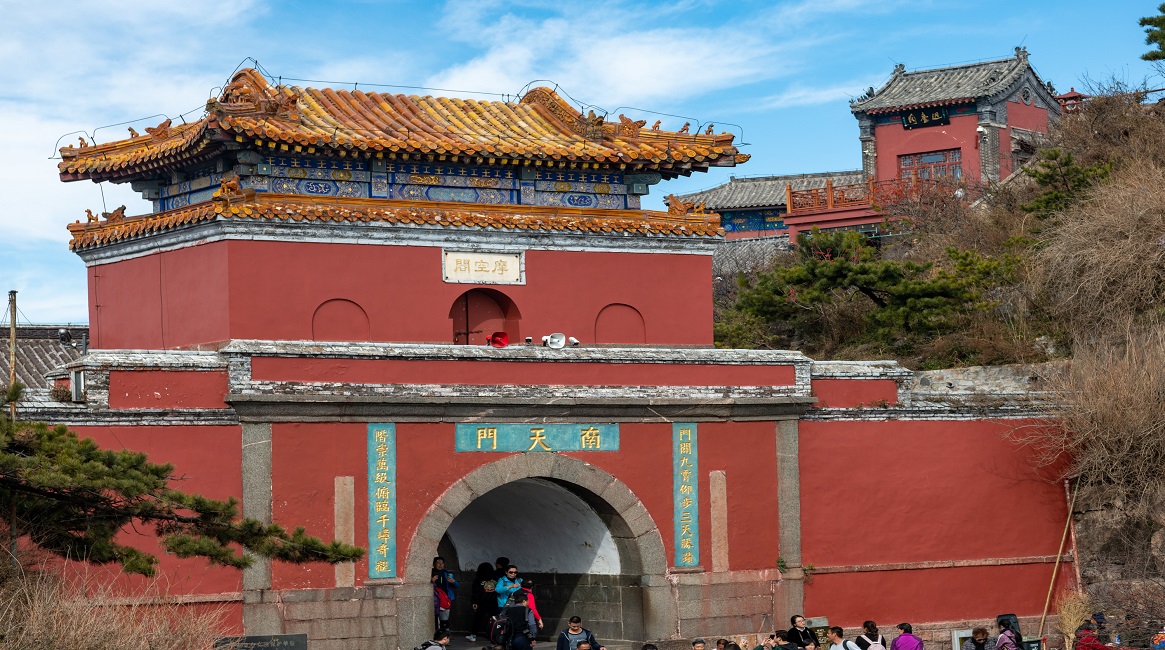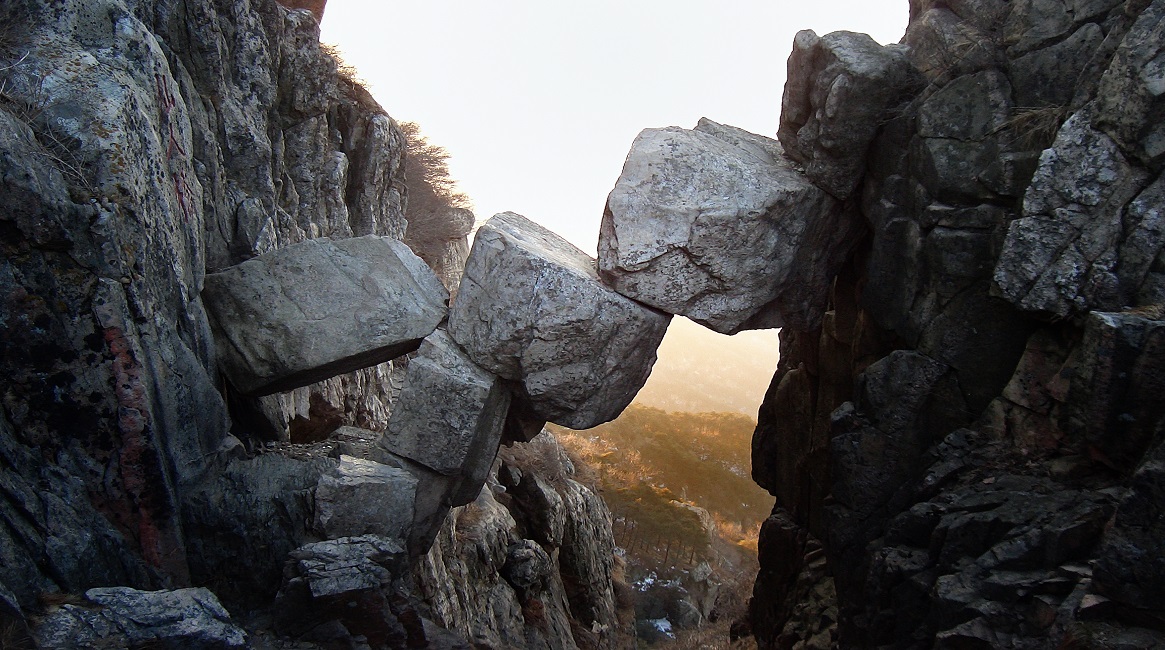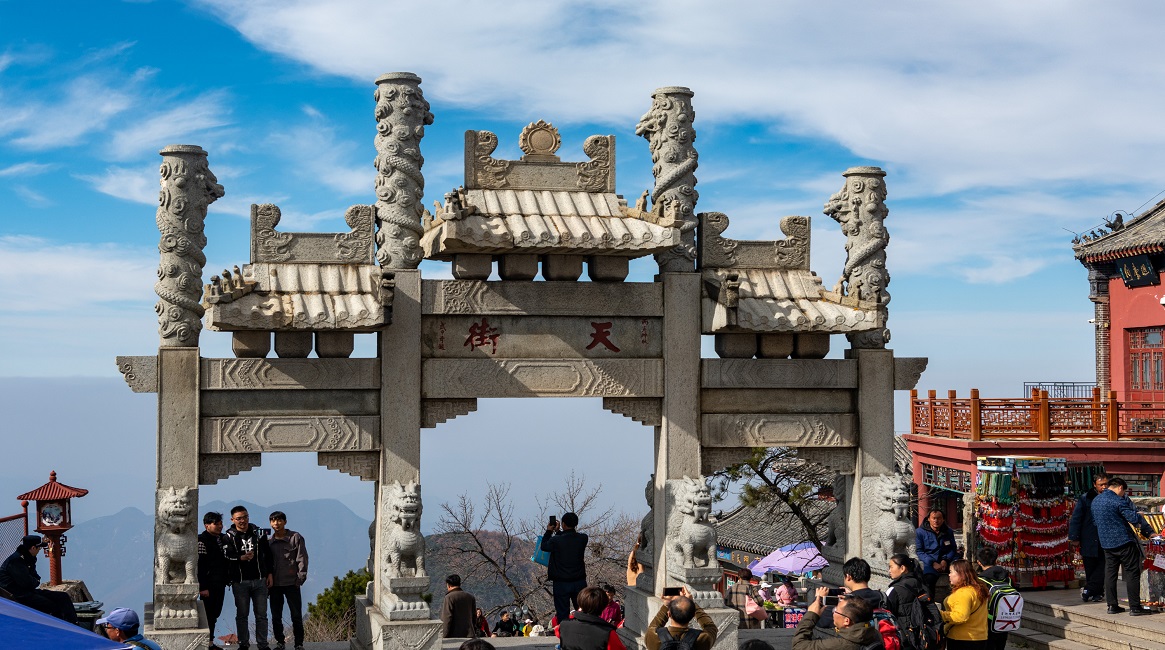Mount Tai: World cultural and natural heritage

Mount Tai is located in the central part of Shandong Province. Its main peak, Yuhuangding, is located in the north of Tai'an City, with an altitude of 1,545 meters. Mount Tai's scenic spots are centered on the main peak of Mount Tai, distributed in a radial pattern, and are composed of natural landscapes and cultural landscapes. Mount Tai is tall and has a majestic image. Especially on the south slope, the mountains are steep, the main peak is abrupt, the mountains are stacked, and the momentum is extraordinary. It contains natural landscape characteristics such as strange, dangerous, beautiful, secluded, mysterious, and vast. The layout of the cultural landscape focuses on Sheshou Mountain and Haoli Mountain in the southwest of Taicheng to the Jade Emperor Summit, forming a triple space of "underworld", "human world" and "heaven". Dai Temple is the main building on the central axis of Tai City at the foot of the mountain. It is connected to Tianjie in the front and winding roads in the back, forming a mountain city. From there, we ascend step by step, gradually enter a better state, and enter the "heavenly and fairyland" from the "human world".

1. Ancient culture
Mount Tai is a majestic mountain with beautiful scenery. Ancient traditional culture believes that the east is the place where all things change and the first spring occurs. Therefore, Mount Tai is known as "the longest of the five mountains" and "the sole of the five mountains". For thousands of years, the natural landscape of Mount Tai has been integrated with factors such as emperors' enshrinement of Zen, poetry and prose, craftsmen's art, and scientific investigation to form the scenery of Mount Tai. The scenic area forms a radial distribution with the main peak as the center, three spaces (Taian City with Dai Temple as the center, the "Yincao Underworld" in Haoli Mountain in the southwest of the city, and the "Xianjie Tianfu" above Nantianmen), and an axis (connecting these The landscape zone of the three-dimensional space is mainly the landscape pattern extending from the central axis of the Dai Temple to the north of the Jade Emperor Peak. From the urban area of Tai'an at the foot of the mountain with an altitude of more than 150 meters, to Zhongtian Gate with an altitude of 847 meters, South Tianmen with an altitude of 1460 meters, and Jade Emperor Peak with an altitude of 1545 meters, the layers rise one after another, forming a unique landscape of Mount Tai.

 2. Place of worship
2. Place of worship
After thousands of years of cultural accumulation, there are many cultural landscapes on Mount Tai. Mount Tai is the center of Qilu culture and one of the important birthplaces of ancient Chinese civilization. According to the records of ancient Chinese dynasties, this mountain was often the place where emperors set up altars to offer sacrifices to pray for the peace of the country and the people, and held Zen ceremonies. According to legend, 72 chiefs came here to hunt and offer sacrifices in ancient times. Since the Qin Dynasty, 12 emperors in ancient China have come here to worship. The first person to hold a large-scale Zen ceremony here was Qin Shihuang, leaving behind the legend of the Five Doctor Pines. It is believed that any emperor who rises with a different surname or has great achievements will be given an auspicious "Fu Rui" by the gods, and he will be qualified to go to Mount Tai to report his success and express his gratitude for the grace of being appointed. This has formed the tradition of the Taishan Ceremony in the past dynasties.
 3. Mount Tai stone carvings
3. Mount Tai stone carvings
Emperors of all dynasties came to Mount Tai to offer sacrifices to heaven and earth, Confucianists preached Taoism, preached scriptures, and Buddhist scriptures, and famous cultural figures climbed the scenic spot, leaving behind a dazzling array of inscriptions, cliffs, and stone couplets. The cliff carvings of Mount Tai are among the most famous mountains. There are more than 1,800 stone carvings in Mount Tai, including more than 800 stone tablets and more than 1,000 cliff carvings. They are distributed as follows: 157 in Dai Temple, 215 in Dailu, 576 in Dongshan Mountain Road, 258 in Daiding, and more than 80 in Daixi. There are 44 places in Daiyin, more than 400 in Lingyan Temple, and more than 100 in Shentong Temple; they mainly include 5 categories such as the memorials of emperors of the past dynasties, records of temple establishment and reconstruction, stone scripture tomb inscriptions, Songdai poems, scene mentions and couplets. Some are natural stone carvings.
The scenery of Mount Tai is famous for its magnificence. The stacked mountains, the heavy shape, the background of pine trees and boulders, and the changes in clouds, mist, and mist make it both majestic and bright, quiet and magical, making it a masterpiece of my country's scenic spots.



